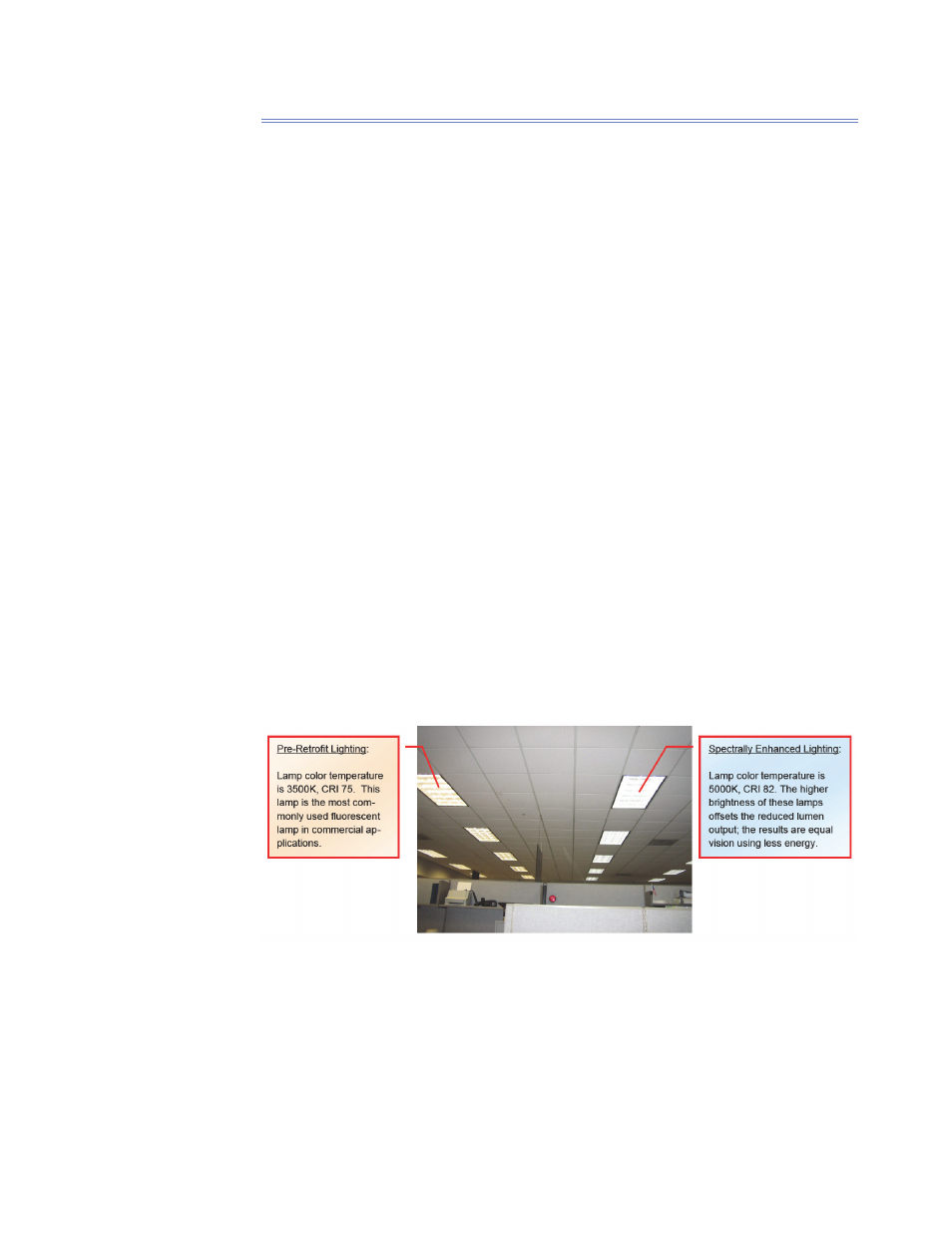Retrotec USACE User Manual
Page 226

D96 ENERGY & PROCESS ASSESSMENT PROTOCOL
D.5.11 Warm-Colored Fluorescent Lamps (Ineffi ciency)
Replace warm-colored fl uorescent lamps with higher color temperature lamps.
Recent fi ndings in lighting science indicate that the color of lighting can affect
the energy-effi ciency of lighting systems. Using higher color temperature fl uo-
rescent lighting and new, extra-effi cient electronic ballasts can attain energy
savings of 20–40% compared to more commonly used fl uorescent lighting sys-
tems (Figure D152). These savings can be achieved through simple lamp/bal-
last retrofi ts, and the products are commonly available.
For lighting installations where vision is important, like office spaces,
health care facilities, and industrial spaces, replace low color tempera-
ture lighting (3500K, for example) with higher color temperature lighting
using 850 fluorescent lamps (5000K, 82 CRI) for optimized results. The
850 lamps have been demonstrated to have high user acceptance. When
using the 850 lamp to replace 3500K, 82 CRI lamps, the light output
and energy consumption can be reduced by 20% while maintaining equal
visual performance. We assumed in the preceding example that the lamps
were changed but were identical except for color temperature, and that
the changes in light output would be achieved with lower ballast factor
ballasts. Increased savings can be realized if the other components of the
installed lighting system are older or less efficient. For example, when
replacing lower CRI 3500K and standard electronic ballasts with higher
CRI 5000K high-performance lamps and premium ballasts, the energy
savings are 40% after light level reduction. This should be used in all new
construction as an energy-saving strategy, as it has immediate payback.
For retrofits, the payback is about 1½ years for T12 replacements and 3–4
years for T8 replacements.
Figure D152. Spectrally enhanced lighting uses less energy than commonly used fl uorescent lamps.
